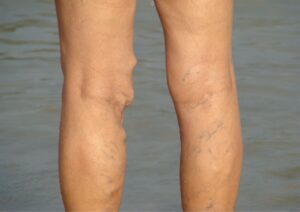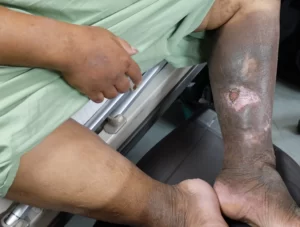When it comes to our overall well-being, we often prioritise regular check-ups for major organs such as the heart, lungs, and kidneys. However, one vital component that often goes unnoticed is the health of our veins. Veins play a crucial role in carrying blood back to the heart, and any issues in their functioning can have a significant impact on our health. In this blog, we will explore the reasons why getting a vein check should be an essential part of your healthcare routine.
Why should you get your veins checked?
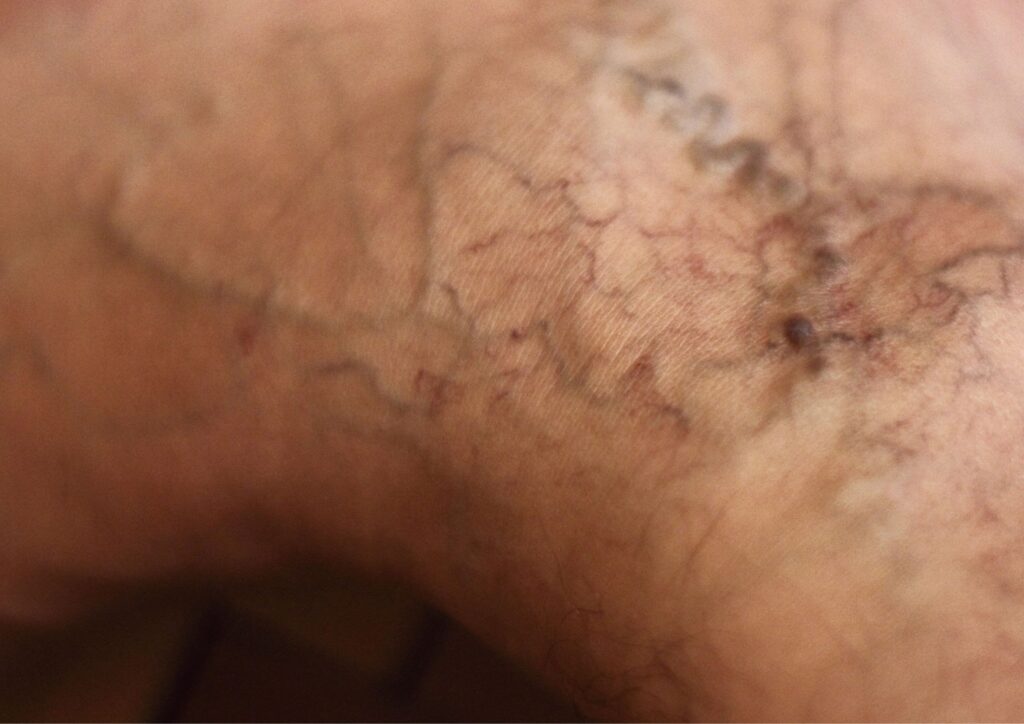
Regular vein checks can help in the early detection of various venous diseases. Conditions like varicose veins, deep vein thrombosis (DVT), and venous insufficiency can be identified at an early stage through routine examinations. Detecting these conditions early allows for prompt treatment and prevents potential complications such as leg ulcers, blood clots, and chronic, venous disease and insufficiency.
When should you get your veins checked?
Regular vein checks can help in the early detection of various venous diseases. Conditions like varicose veins, deep vein thrombosis (DVT), and venous insufficiency can be identified at an early stage through routine examinations. Detecting these conditions early allows for prompt treatment and prevents potential complications such as leg ulcers, blood clots, and chronic, venous disease and insufficiency.
When should you get your veins checked?
Knowing when to get your veins checked is essential for maintaining good vascular health. While specific circumstances may vary depending on individual factors, there are some general guidelines to consider. It’s always a good idea to consult with a healthcare professional for personalized advice, especially if you have specific risk factors or concerns. However, here are some instances when it’s recommended to get your veins checked:
1. Family History:
If you have a family history of vein-related conditions such as varicose veins, deep vein thrombosis (DVT), or venous insufficiency, it’s advisable to undergo a vein check. Genetic predisposition can increase your risk, and early detection is crucial for timely intervention and prevention of complications.
2. Visible Vein Changes:
If you notice visible changes in your leg veins often, such as enlarged or twisted veins (varicose veins) or small clusters of red or purple veins (spider veins), it’s a good idea to have them examined. These changes may indicate underlying venous issues that require attention.
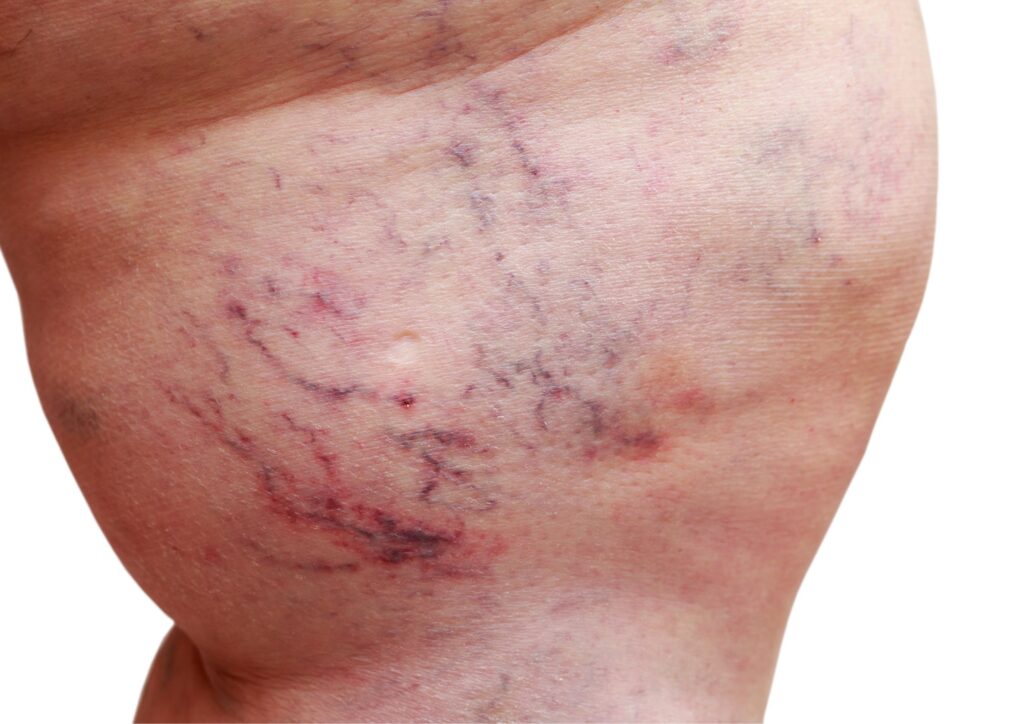
3. Leg Discomfort or Swelling:
If you experience persistent leg pain, aching, heaviness, or swelling, it could be a sign of venous insufficiency or other vascular problems. Getting a vein check can help your doctor identify the underlying cause and guide appropriate treatment options.
4. Prolonged Sitting or Standing:
If your lifestyle or occupation involves prolonged periods of sitting or standing, you may be at a higher risk for developing vein-related issues. Occupations such as office jobs, long-haul flights, or jobs that require extended standing can contribute to venous insufficiency. Regular vein checks can help monitor your vascular health in such cases.
5. Pregnancy:
Pregnancy places extra stress on the circulatory system, and hormonal changes can affect vein health. Many women develop varicose veins during pregnancy due to increased blood volume, pressure on vein walls of the veins, and hormonal fluctuations. If you’re pregnant or planning to conceive, discussing vein checks with your healthcare provider is recommended.
6. Prior Medical Conditions or Treatments:
If you have a history of conditions that affected vein, such as DVT, blood clots, or previous vein-related procedures, regular follow-up vein checks are important to monitor your ongoing vascular health. Additionally, if you’ve undergone surgeries or treatments that may impact your veins, such as cancer treatments or vascular surgeries, regular checks are crucial.
How do you know if you have vein problems?
Varicose veins asymptomatic include: swelling in legs and ankles; swelling of the legs; aches or pain in the muscles.
Unexplained Leg Pain, Cramps, and Restless Legs
Hidden vein diseases can cause various symptoms, including unexplained lower leg back pain, leg cramps, and restless legs. Venous insufficiency can cause blood pooling and increased pressure, causing pain, aching, or heaviness in the legs. Leg cramps can be attributed to muscle fatigue or dehydration, but can also be related to venous issues. Restless Leg Syndrome (RLS) is characterized by an uncontrollable urge to move the legs during rest or sleep. Although the exact cause is not fully understood, it has been associated with venous insufficiency and varicose veins. Symptoms can be alleviated by moving the legs or walking.
Leg Swelling/Lymphedema
Leg swelling can be caused by various factors, including lymphedema and vein disorders. Lymphedema is a condition characterized by the accumulation of lymphatic fluid in tissues, leading to persistent swelling in the arms or legs. Vein disorders, such as chronic venous insufficiency (CVI) or deep vein thrombosis (DVT), can also cause leg swelling. CVI occurs when vein valves become damaged or weakened, causing blood pooling and increased pressure in deeper veins in the lower extremities. DVT is a blood clot that forms within a deep vein, typically in the legs, causing swelling, pain, warmth, and redness. Overlapping conditions can exacerbate leg swelling and related symptoms. Consulting a vein specialist is crucial for an accurate diagnosis and appropriate treatment plan. They can evaluate symptoms, medical history, and perform diagnostic tests to differentiate between lymphedema, vein disorders, or a combination of both. Treatment options include compression therapy, physical therapy, lifestyle modifications, and surgical interventions. Seeking timely medical attention can alleviate pain, discomfort, and improve overall leg health.
Itching / irritated skin
Vein problems in the legs and feet can cause skin irritation and itching. Venous insufficiency, caused by improper functioning of vein valves, can lead to increased pressure and blood pooling in the lower extremities, causing various skin-related issues such as dry skin, eczema, and stasis dermatitis. Itching can also increase the risk of scratching, which can break the skin and increase the risk of secondary infections. Seeking medical attention is crucial for managing vein-related skin irritation and itching. Treatment options include compression therapy, topical treatments, lifestyle modifications, and additional interventions. Early intervention is key to managing vein-related skin irritation and itching, promoting healing and improving overall comfort and well-being.
Skin wounds (ankle area)
Vein-related issues, which occur especially in the ankle area, can contribute to the development of skin wounds like venous ulcers, a significant concern affecting millions of Americans annually. Venous ulcers are chronic wounds caused by inadequate venous blood flow, often due to venous insufficiency. Venous ulcers can be painful and increase the risk of infection, with bacteria entering the wound causing inflammation, delayed healing, and potential complications. To effectively heal venous ulcers, it is crucial to address underlying vein problems causing impaired circulation. Common treatment options include compression therapy, venous procedures, wound care, and timely correction and healing.
Red, Hot, Tender Spot on the Leg
A red, hot, and tender spot on the leg can indicate blood clots. There are three types of blood clots: Deep Vein Thrombosis (DVT), superficial Vein Thrombosis (SVT), and Pulmonary Embolism (PE). DVT occurs when a blood clot forms in a deep vein, causing pain, swelling, and tenderness. SVT is less serious but can cause discomfort and some bleeding and increase the risk of DVT. PE occurs when a blood clot dislodges from its original site and travels to the lungs, causing life-threatening symptoms.
Prevention of Complications:
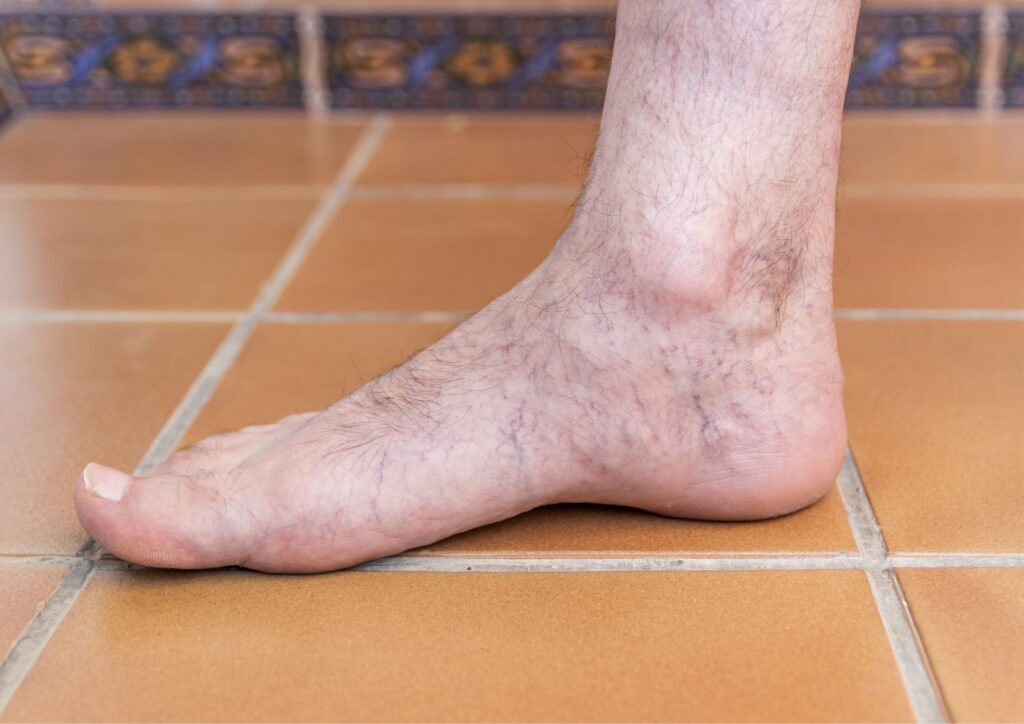
Venous diseases can lead to severe complications if left untreated. Varicose veins, for example, may cause discomfort, swelling, and aching in the legs, which can significantly affect your quality of life. If venous disorders are not addressed, they may progress to more severe complications such as skin changes, ulcers, and increased risk of blood clots. By getting a vein check, you can identify any underlying issues and take proactive steps to prevent complications from arising.
Improved Circulation and Blood Flow:
Healthy veins are crucial for maintaining proper blood flow and circulation throughout the body. If your veins are compromised, it can lead to blood pooling, reduced oxygen supply, and inefficient waste removal. By undergoing a vein check, your healthcare provider can assess the condition of your veins and suggest appropriate measures to enhance blood vessels and circulation. This can contribute to overall better health, increased energy levels, and improved functioning of vital organs.
Evaluation of Risk Factors:
Certain risk factors increase the likelihood of developing venous diseases. These include a family history of vein disorders, obesity, pregnancy, prolonged sitting or standing, and a sedentary lifestyle. By getting a vein check, you can identify if you are at a higher risk and take preventive measures to mitigate potential complications. Your healthcare provider can provide personalized advice on lifestyle modifications, exercises, and interventions to minimize the impact of these risk factors.
Tailored Treatment Options:
Each individual is unique, and so are their vein disease-related concerns. A vein check allows healthcare professionals to evaluate your specific condition and offer personalized treatment options. This may include lifestyle changes, compression therapy, minimally invasive procedures such as sclerotherapy or endovenous ablation, or, in severe cases, surgical intervention. By understanding your vein health, you can work collaboratively with your healthcare provider to choose the most appropriate treatment plan.





